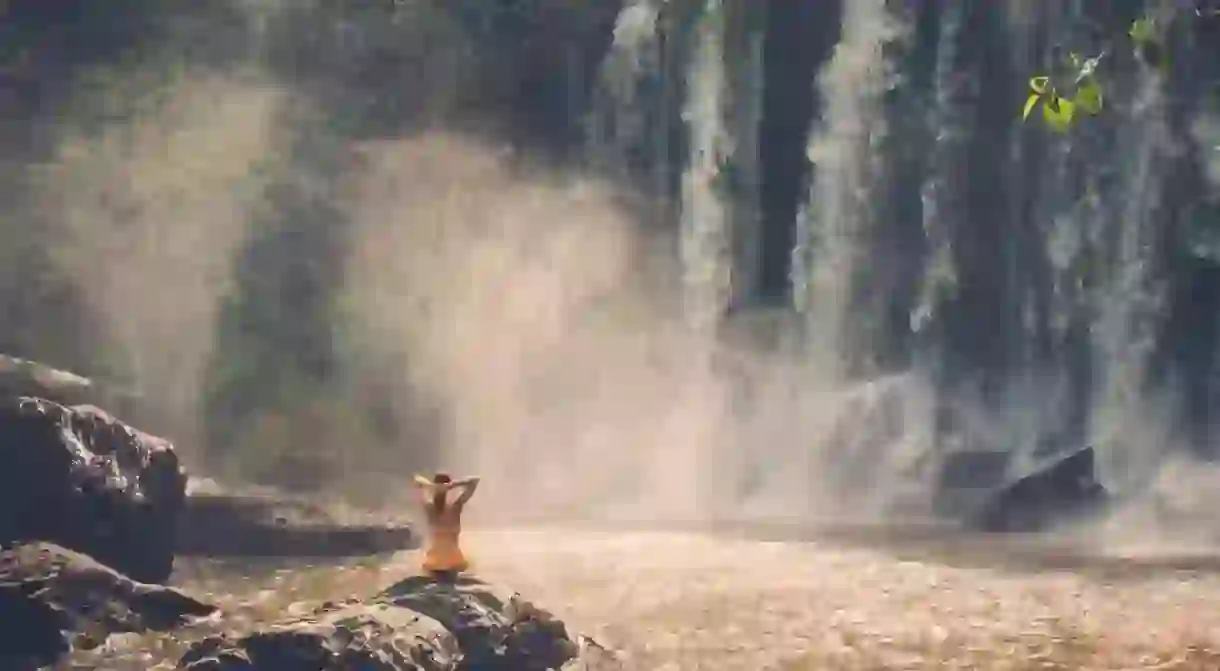10 Epic Places Every Cambodian is Proud of

A strong sense of national pride exists in Cambodia, and there is an abundance of sites that locals hold close to their hearts. Here are a few of the most-favoured spots.
Angkor Wat
This iconic temple complex may well be Cambodia’s main tourist draw but, more importantly, it sits at the centre of Khmer national pride. It’s also well worth remembering that while it’s a major tourist attraction, it also serves as a temple and sacred place of worship – the largest religious monument in the world – for Cambodians, of which the majority are Buddhist. Built in the 12th century as a Hindu temple, it later changed to a Buddhist temple, and served as the capital of the ruling Khmer Empire. It appears on the national flag.

Mondulkiri
The eastern province of Mondulkiri is predominantly home to Cambodia’s hill tribes, the Bunong. The minority ethnic group, who have inhabited the rugged region for generations, have been dubbed the caretakers of Cambodia’s sacred forests. Living alongside nature, the Bunong people deem areas of the thick forest sacred due to ancestors being buried there. Nature lovers will be in their element in Mondulkiri thanks to the vast jungle, which is being threatened by illegal loggers, and its rare flora and fauna. It is also home to a handful of elephant sanctuaries.
Wat Langka
Ask any Cambodian and they’ll know landmark Wat Langka in Phnom Penh. Created as a sanctuary for Holy writings and a meeting point for monks from Cambodia and Sri Lanka, it is home to a shimmering temple, shaded grounds and colourful murals. As one of the capital’s oldest temples, dating back to 1442, many of the monks based there are highly-regarded teachers. Free meditation sessions take place throughout the week.
Prasat Preah Vihear
Prasat Preah Vihear (temple of the sacred mountain) has been at the centre of conflict for decades. Sitting on the edge of the Cambodian-Thai border, ferocious fighting between the two countries over ownership of the sacred site pursued until recent years. In 2015, the destination was deemed safe and taken off many foreign offices’ watch lists. While military presence remains strong, the temple is well worth a visit. With none of the crowds that plague Angkor, Prasat Preah Vihear is a series of impressive structures, built between the 9th and 12th century by several kings.

Provinces
The Cambodian countryside is the jewel of the country, with pristine paddies stretching to the horizon dotted with grazing buffalo, dusty dirt tracks and gently waving palm trees. Ask any Cambodian about their “homeland” – or home province where their family is rooted – and they will swell with pride. So, whichever part of rural Cambodia you’re exploring, it will be someone’s super special spot.
Koh Ker
Another ancient sacred place of worship that Cambodians hold close to their heart is the lesser-known Koh Ker temple complex. Serving as the capital of the Angkorian empire from 928AD to 944AD, the remote site – 127km northeast of Siem Reap – boasts 42 religious structures and monuments spread across a 9km by 4km area nestled among the forest.
Phnom Kulen
Phnom Kulen and its sprawling national park is considered by locals to be Cambodia’s most sacred mountain. Located in Siem Reap province, the area becomes populated by Cambodians during public holidays and religious festivals. It is home to a giant reclining Buddha that sits at the mountain’s peak, waterfalls perfect for swimming in, remote temples and The River of a Thousand Lingas, featuring ancient carvings on the stone riverbed. Steeped in history, it was at Phnom Kulen from where Jayavarman II declared himself a devaraja (god-king) in 802AD.

The Royal Palace
With respect running rife in Cambodian culture, this of course extends to the royal family. While the revered King Father Norodom Sihanouk passed away in 2012, his son King Norodom Sihamoni is still highly regarded. This means the Royal Palace in Phnom Penh is special to many locals, with the manicured grass that sits in front of the Silver Pagoda full of locals during downtime.
Cardamom Mountains
This sprawling mountain range and dense tropical jungle stretches from Koh Kong province on the Thai border to Pursat in central Cambodia, through to the Damrei Mountains, close to Vietnam. Home to one of Southeast Asia’s largest remaining rainforests, a diverse range of rare flora and fauna remains here – for now – making the Cardamoms a great place for trekking.
Kep
Formerly a destination for Cambodia’s elite, the coastal resort of Kep is dotted with relics harking back to the country’s Golden Age of the 1950s and 60s. Today, it remains a popular spot with Cambodians during public holidays, with the small stretch of beach full of families eating freshly caught fish bought from the nearby Crab Market, wading in the water or playing on the sand.














